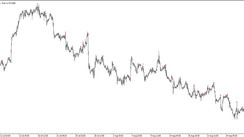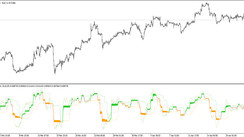Refinancing costs for developed market nations who took out large loans in dollars at a time when interest rates were lower are rising, bringing back memories of Asia's debt crisis in the 1990s and raising concerns of a wave of defaults.
A common indicator of distress is the fact that a quarter of the nations' sovereign dollar bonds trade at a spread of 1000 basis points. Investors are being reminded by the rise in yields of past emerging debt crises, particularly the one that engulfed Asia in 1997 and saw country after country fall into insolvency as a result of collapsing national currency. The expression original sin, previously popular among economists to characterize developing countries' dependence on foreign currency debt, is imposing the painful conclusion that large portions of the developing world are all still plagued by it.
Debt distress is not only a problem in developing countries; large segments of corporate borrowers in industrialized economies are also at risk from rising interest rates. However, the effects of a cascade of failures across developing countries could have much more significant effects on the world economy. One of the main causes of the 1997 Asian crisis, which later spread to Russia and South America, was dollar borrowing, which made countries susceptible to fluctuations in the exchange rate and changes in Fed policy.
As countries developed domestic money markets and reduced their dependence on debt in hard currencies, it had appeared for a time that developing markets had been cleansed of their original sin. But in latest days, a number of sovereign governments have ventured abroad, drawn by historically low international interest rates and missing robust home capital markets. That persisted through 2020, when USD and EUR borrowing by EM sovereign governments and corporate bodies reached a record $747 billion.
Many Asian investors are asking for a premium above Treasury bonds of approximately 1200 percentage points to keep its USD bond due in March 2024. The Asian nation's economic hard currency reserves have decreased due to rising import costs brought on by the strong dollar, and its indebtedness has risen to roughly 100% of its yearly GDP. While minor frontier markets account for most troubled credits, the list also includes several larger countries like Egypt, Nigeria, and Pakistan. Many evolving currencies have seen declines of over 10% this year, putting pressure on the government at a time when oil prices are on the rise.
According to the chief economist of Deutsche Bank, stress on EM currencies and bonds will persist until mid-2023, and then the dollar's strength may weaken. Many countries have more than half of their debt in foreign currencies, and it makes the argument that investor losses are now significant enough to classify as a crisis. Many countries are trying to find a way out of this financial crisis; for example, Japan has reopened its gates to tourists to boost the national economy.





